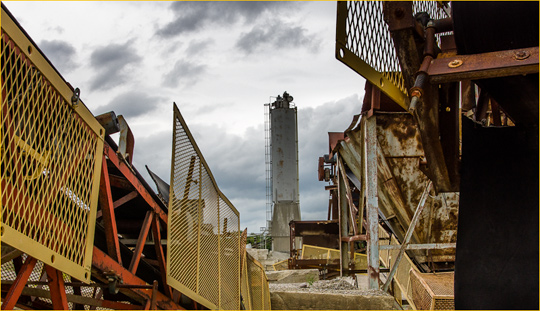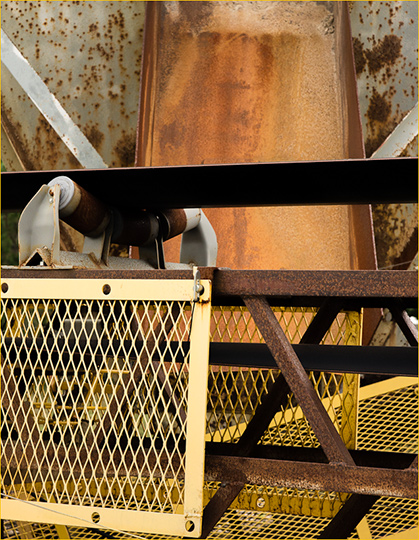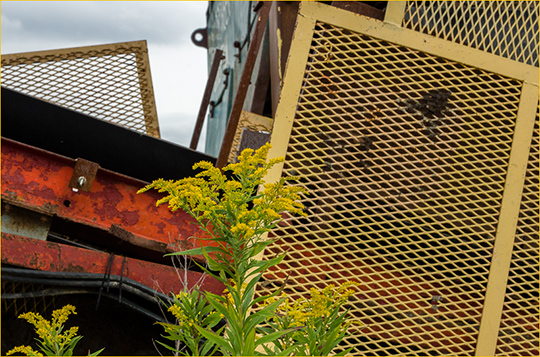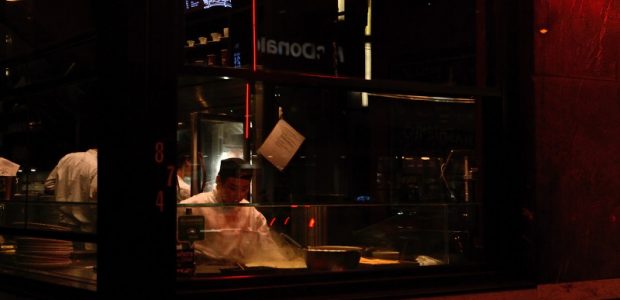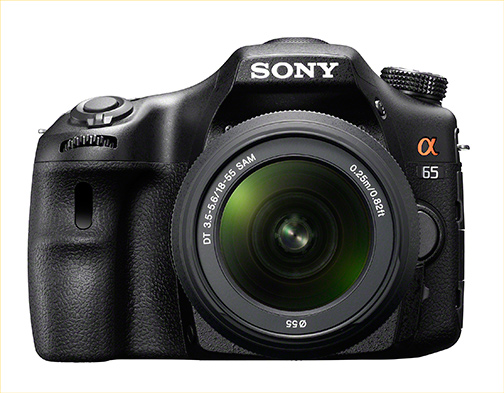
Sony’snew camera introductionon August 24, 2011 was particularly fascinating because they introduced three totally new cameras, theA77, A65 and NEX-7. Three new cameras at once is of interest enough, but what caught my attention was that all three share the same 24 Megapixel sensor, the same 2.4M pixel electronic viewfinder, the same Bionz image processing engine, and the same top-end video capability.
If you haven’t already done so have a look at myA77 First Impressionsreport, as many of the two camera’s features and capabilities are quite similar. Therefore capabilities such as Sweep Panorama are not discussed in this report. The differences though will be discussed shortly.
These three cameras offer essentially the same image quality, something quite unusual from camera makers, since with these three models Sony covers the high-end prosumer, mid-range consumer, and full featured CSC categories. Of course these cameras differ in their handling, weather proofing, and features like frame rates, and of course price. The NEX-7 uses the Sony E lens mount, but with the new LA-EA2 lens adaptor it can take all Sony A mount lenses with full high-speed phase detection autofocus, so it can be said that all even can take the same Sony A series lenses.
Quarry #3, Clearview, Ontario. September, 2011
Sony A65 with Sony / Zeiss 24-70mm f/2.8 lens @ ISO 400
A65 Vs. A77
So – what are the differences that will make the A77 worth US $1,399 and the A65 worth $899? This five hundred dollar difference is a substantial amount of money. Here then is small table of the major differences…
A77 – $1,399
A65 – $899
Weather Proof Body
Y
N
Magnesium Alloy Body
Y
N
Max Frame Rate
12 FPS
10 FPS
Rear LCD
3 Way Articulation
2 Way Articulation
TOP Panel Info LCD
Y
N
System Focus Adjustment
Y
N
Flash PC Socket
Y (1/250 sec)
N (1/160 sec)
Shutter Life
150K actuations
100K actuations
AF Sensors
19 point / 11 cross
15 point / 3 cross
Ruggedness, built quality, and water and dust resistance are one major difference. The A77 is pro-grade in this regard, while the A65 is consumer grade. For a photographer working at a hobby level and who makes limited demands on their gear in terms of rough usage, the A65 should do the job admirably. Pros, or photographers working in tough outdoor conditions will find the extra cost of the A77 well worthwhile in the long run. Of course a more ruggedly constructed shutter with longer projected life span will appeal to busy working pros as well. Of course the type of subjects one shoots will also be a determining factor when it comes to ruggedness.
Many hard working pros will burn through 150,000 exposures in a year or two. But to put it in context, for a typical enthusiast who shoots say an average of 200 exposures a week, the A65’s shutter will last for some 15 years, making this an academic question at best. (By 2026 you’ll be shooting with theSonikanon A9000 Mk ii, with direct neuro-optical implant, and your A65 or A77 will either be collecting dust in the attic, or lying in a landfill site).
The faster frame rate of the A77 (though 10 FPS on the A65 is still plenty fast) will be nice to have, as will the superior AF system, if one is shooting sports or other fast action subject. For someone doing nature, landscape, or other more sedentary subjects the advantage of the A77 in this respect may not be that significant.
Finally, the difference in size and bulk may be a factor for some. The A65 is about the same size and weight as a Canon Rebel, while the A77, especially with its optional vertical grip attached, is a significantly larger and heavier beast.
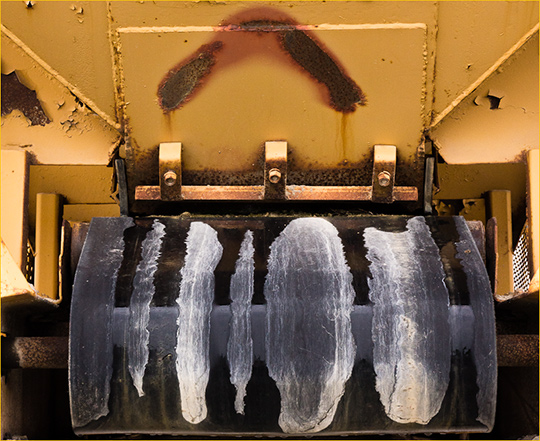
Quarry #5. Clearview, Ontario. September, 2011
Sony A65 with 24-70 CZ f/2.8 @ ISO 800
The EVF
One of the upsides of a full frame sensor camera over a reduced frame DSLR is that the viewfinder is able to be much brighter and larger. This is the case with optical viewfinders and is a function of simple physics. But an electronic viewfinder doesn’t have these constraints. With the new 2.4 million pixel OLED technology electronic viewfinder found on the A65 and other new 24MP Sony cameras, this is a clear advantage over virtually any other non-full frame camera.
Of course an EVF and an optical viewfinder each have their individual pros and cons. But, if you are predisposed not to like electronic viewfinders based on past experience you owe it to yourself to visit a dealer and look through one when this camera becomes available in October. The new Sony EVF is really a game changer, and compared to a small and dim DSLR finder is likely to be preferred. Compared to an optical viewfinder like the one on the A900 it may be another story though. The A900’s vewfinder and prism remain about as good as it gets.
The Kit Lens
The A65 is available bundled with an 18-55mm f/3.5-5.6 lens for an extra $100. It’s hard for me to recommend this lens even given its low price. I suppose that if one is really pressed financially it’s better than no lens at all, but that’s about the kindest thing I can say about it. The high image quality that the A65 is capable of simply won’t be able to shine through if one is limited to this lens.
Quarry #1, Clearview, Ontario. September, 2011
Sony A65 with Sony / Zeiss 24-70mm f/2.8 lens @ ISO 400
In Hand
Unfortunately, I had the A77 and the A65 available to me for preliminary testing on two different weeks and thus couldn’t do a side-by-side handling comparison. The A77 clearly has operational advantages, such as a rear thumb joystick, the top panel LCD, two control wheels, and a PC flash socket. (Studio flash units can be used with the A65 but this requires a hot shoe adaptor).
One thing that the A65 has in common with the A77 (and the NEX 5N and NEX-7) is the extreemly quick shutter response. Lag has been reduced to as low as I’ve ever seen; a claimed 20 milliseconds. Thinkclick, finger responds, shutter actuates.
ISO & Noise Characteristics
Because the camera tested was still pre-production (Firmware V1.02) it isn’t appropriate to draw too many IQ conclusions. But I was curious to see how the camera’s high ISO noise characteristics held up.

This series was taken with the A65 and Sony / Zeiss 24-70mm f/2.8 lens at f/5.6. The camera happened to be set to 16:9 aspect ratio, but that doesn’t change any aspect of what is being tested, simply cropping the top and bottom of the frame in stills mode.
The image was raw and processed in a pre-release version of one of the more popular image processing programs. White balance was custom set, and post processing consisted of my typical adjustments for a high quality print using a calibrated and profiled monitor.
The series below are 100% crops of the shot immediately above.
Please note that though the camera was tripod mounted the subject wasn’t. There are therefore slight focus shift differences between some of the frames due to this movement. Look at the noise, such as it is, not the resolution on any particular part of the frames.
 |
|
ISO 100 |
ISO 200 |
 |
 |
ISO 400 |
ISO 800 |
 |
 |
ISO 1600 |
ISO 3200 |
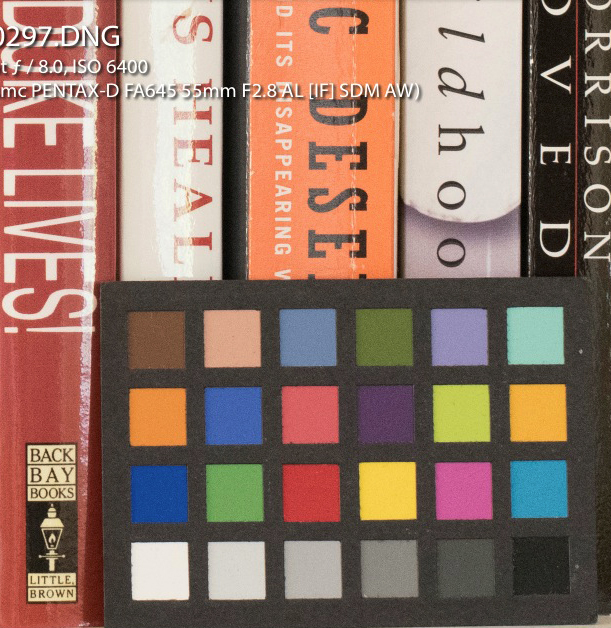 |
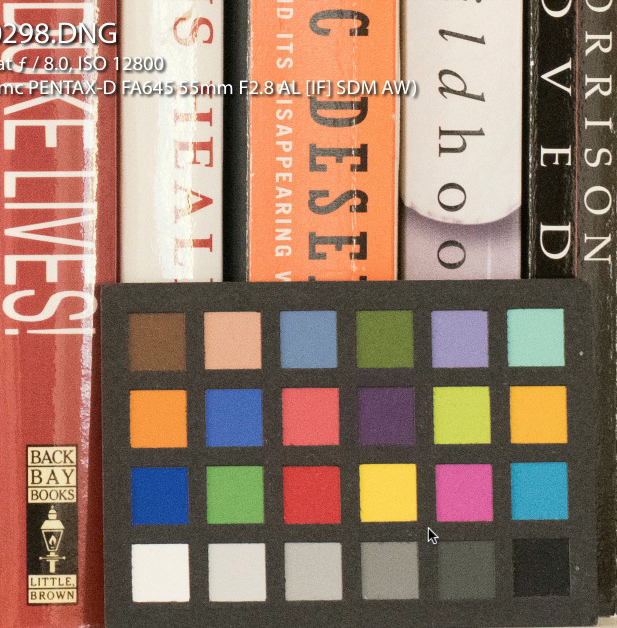 |
ISO 6400 |
ISO 12,800 |
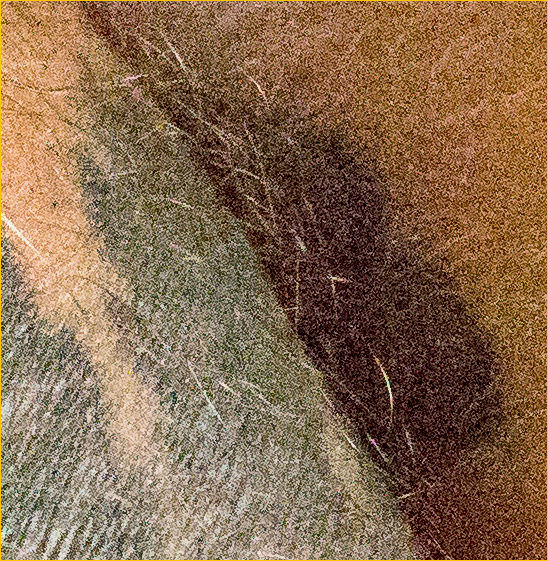 |
NA |
ISO 16,000 |
NA |
Needless to say there is a vast difference between noise characteristics at 100% and those seen in real-world prints. Looking at the above one might think that intrusive noise starts at ISO 3,200. In reality, on 13X19″ prints I find that it isn’t until ISO 6,400 that noise becomes an issue, and even then a bit of luminance noise reduction takes care of things quite nicely. There also hardly seems to be any chroma noise at all.
Certainly ISOs from 100 through and including 1600 are essentially noise free in any sized print.
A Word of Caution

Sony A65 with Sony / Zeiss 24-70mm f/2.8 lens @
ISO 12,800
Take a look at the frame above. It was taken at ISO 12,800. Not bad at this size, huh? In fact damn good. That’s because the image, when reproduced on a typical monitor at 100%, would be 83 inches across on screen. That’s seven feet wide!
At what distance do you view a seven foot wide image? Certainly not with your nose 10 inches from the screen. One rule of thumb is that the minimum viewing distance for a print is the same as its diagonal. So, something like 10 feet away for a seven foot wide print.
Now scroll up to the ISO 12,800 image in the test sequence above and walk back about 10 feet from your screen. Not so bad, isn’t it.
Therein lies the fallacy of pixel peeping. Looking at an image from a high resolution camera on-screen at 100% is like walking up to your large screen TV and looking at the picture at the closest distance that your eyes can focus. What do you see? RGB dots, right? Now go back to your favourite arm chair and what do you see? The Sunday afternoon football game.
I rest my case.
Back in the days of 3 Megapixel and 6 Megapixel cameras looking at an image at 100% on screen bore a relationship to what we might see on an 8X10″ or a 11X17″ print. Today, a 24 Megapixel file can make an excellent 24X36″ print. How many prints that big do you ever make? Indeed, how many worthwhile photographs do you ever take at anything over ISO 1600?
But still, we continue to insist on looking at images at 100% on-screen. It does tell us things about the image quality, but just not things that are terribly relevant to most people’s real-world needs.
I suppose this is like reading an automobile review in which handling and braking at 140 MPH is reported. Not that one will ever drive at that speed, but performance at 70 MPH can be extrapolated from it – maybe.
In any event;guilty your honour.
Compared to the Sony A900
It’s been three years since the first full-frame 24 Megapixel cameras appeared from Canon (21MP), Nikon and Sony. Sony has now pushed the envelope with not one but three 24 Megapixel APS-C sized cameras. The question therefore naturally arises – does the reduced sensel (photosite) size cause a noisier and lower quality image? Certainly having 24MP in an APS-C sized sensor is causing some eyebrows to be raised.
The A65 I used is a pre-production camera with Firmware V1.02. There is little doubt that final shipping cameras will have improvements over this performance and so the comparisons below should not be regarded as in any way definitive.
The full frame below shows the desktop test setup, done under natural window light. The small yellow rectangle at top left of the Macbeth mini-color chart shows the extremely small area that is reproduced at 100% in the following comparisons. This is a very small crop when such a high resolution sensor is used, so once again I caution against drawing too much of a conclusion from what you see here on screen, since normal sized prints show nothing like the noise that we see here, from either camera.
Finally, the lens used was a Sony Zeiss 135mm f/1.8, one of the finest lenses that I own, and also one of the sharpest and most aberration free that I know of. Note that these files were processed in a pre-release raw processing program and therefore there may be anomalies that might not be seen a couple of months from now.
No sharpening or other post processing was applied other than a white balance on the Macbeth chart’s second white square. Note though that the A900 has been focus calibrated usingLens Alignwhile the A65 wasn’t, since it doesn’t have that capability.

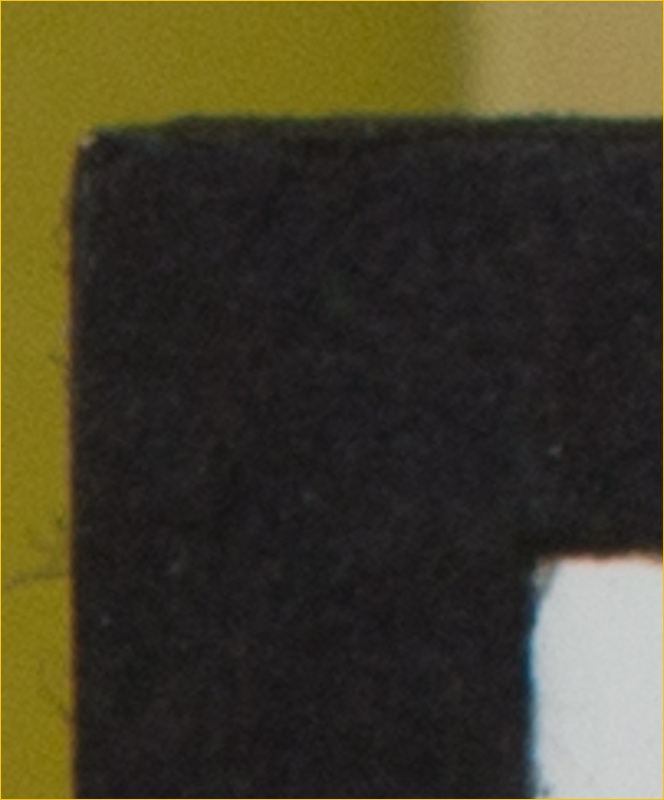 |
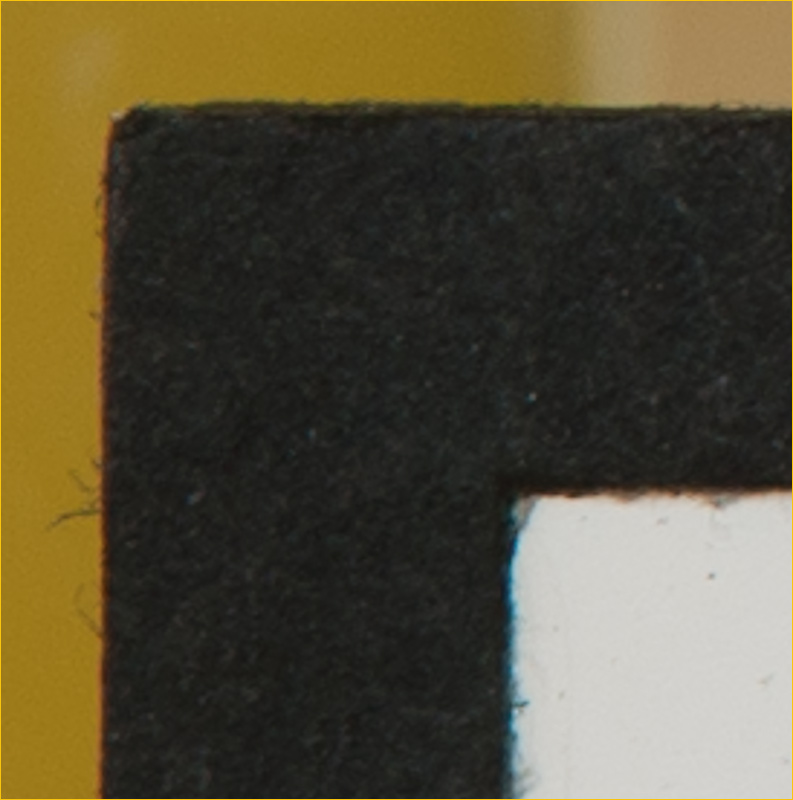 |
A65 ISO 100 |
A900 ISO 100 |
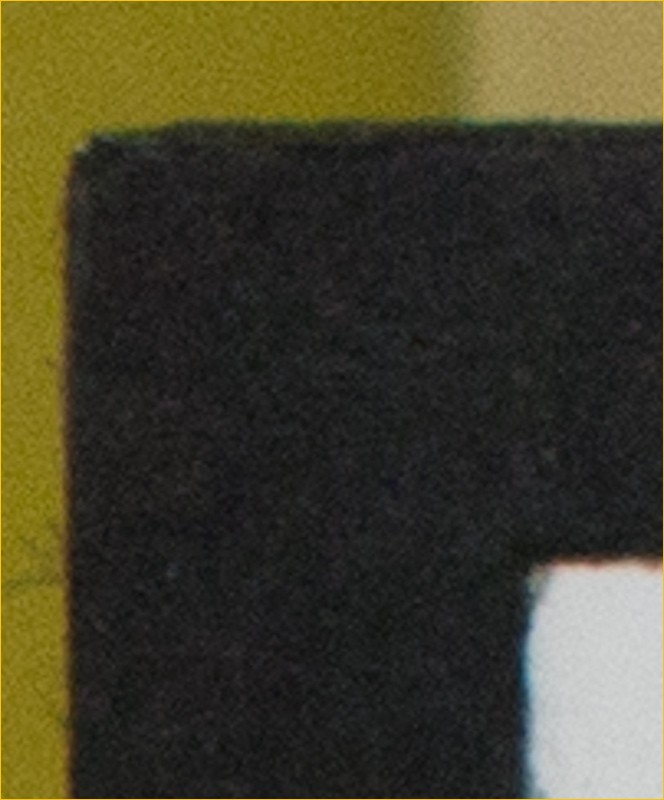 |
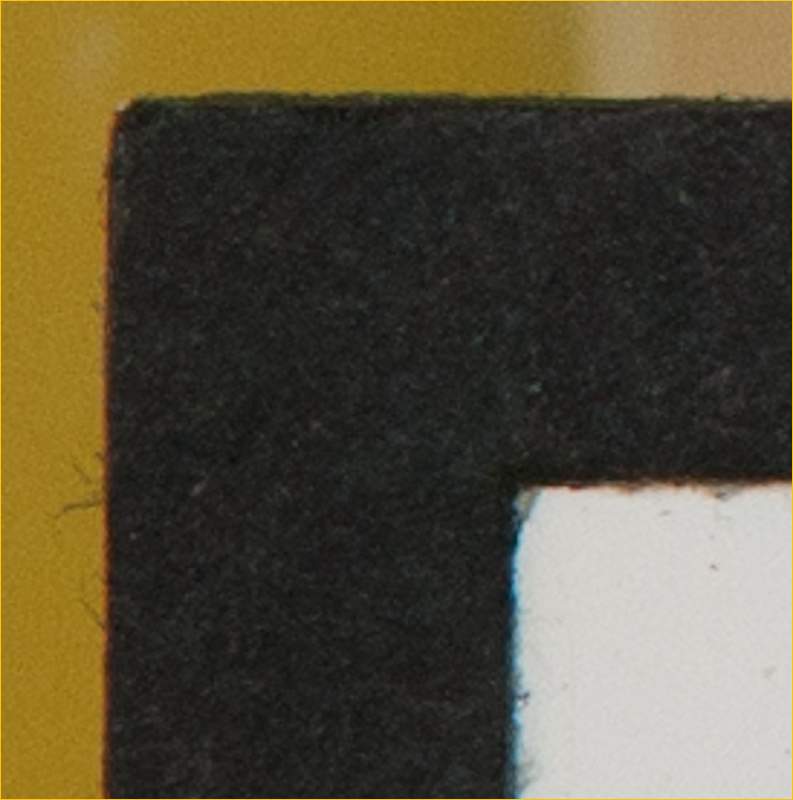 |
A65 ISO 400 |
A900 ISO 400 |
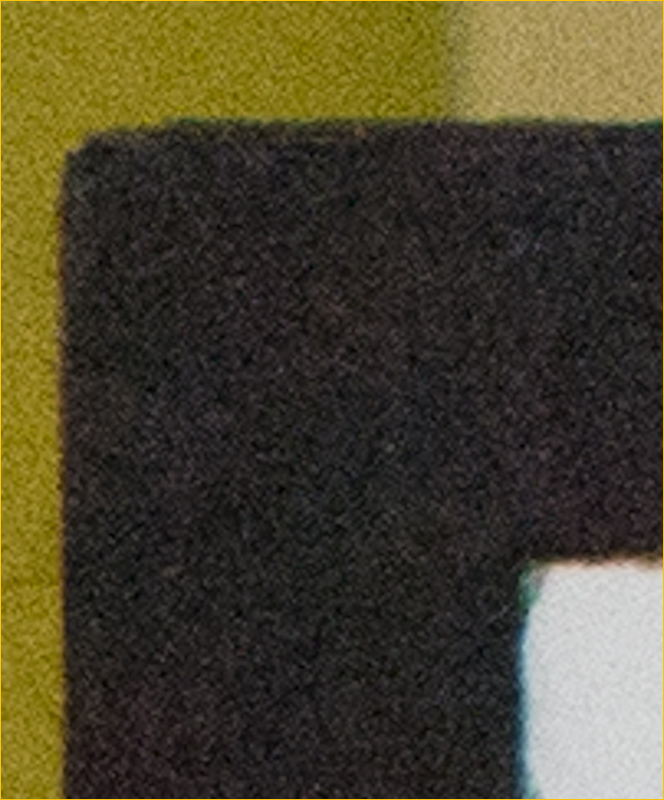 |
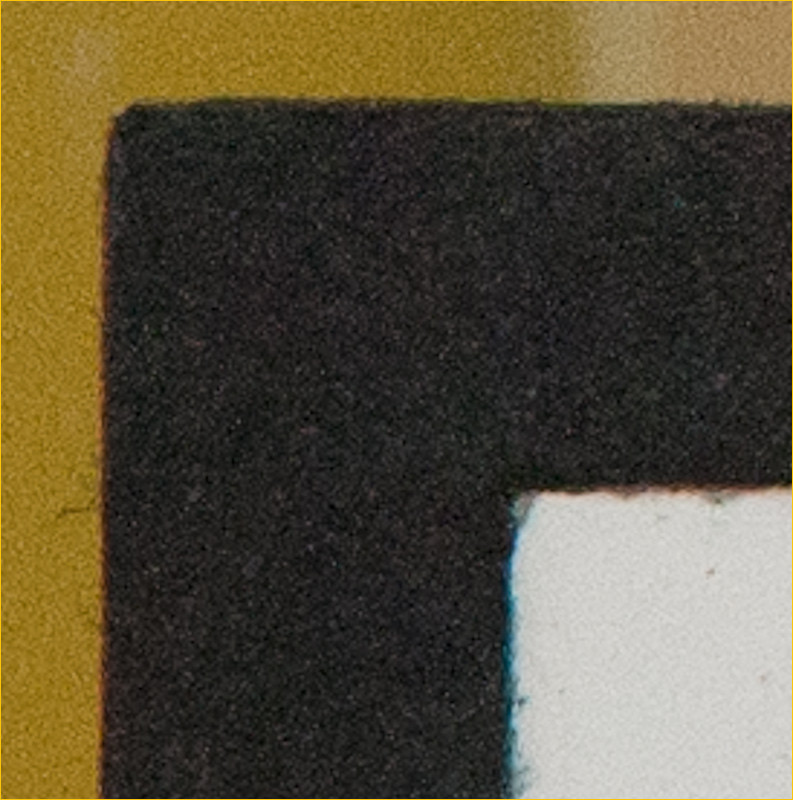 |
A65 ISO 1600 |
A900 ISO 1600 |
The three year old Sony A900 is not known as a particularly noise-free camera at high ISO. This is only partially true because most noise comparisons done on the web are shown at 100%, which when one is evaluating 24MP files means areally bigenlargement. This is of course exactly what I’m doing here.Mea Culpa, but this is what people want to see, even if it doesn’t represent what one experiences in real world photographs.
Having said that, the Canon 5D MKII and especially the Nikon D3x are lower noise than the A900 at higher ISOs. At ISO 400 and below all three are quite comparable.
What we see in the above comparisons is that even at ISO 100 the A65 shows somewhat more noise at 100% on-screen than the A900, which is essentially noise free. The A65’s noise is absolutely invisible in three quarter to mid-tones, and completely invisible in normal sized prints in any part of the tonal range, but in the quarter tones on screen there definitely is some luminance noise visible.
At ISO 400 where the A900 just starts to show noise at 100% on-screen, the A65 has already become quite noisy. In 13X19″ prints this noise is just starting to become visible. At ISO 1600 the A65 appears quite noisy on screen, though again, not really so much in normal large print sizes where a bit of luma noise reduction is all it takes for a very respectable print. Overall I would judge the A900 to be about one and a half stops lower noise overall than the A65.
Once again, I caution not to draw any definitive conclusions from these initial tests. Once I have a production sample of one of the new 24MP Sony cameras as well as final raw software, I will redo these tests, for my own edification as well as readers’. Remember as well, that this is extreme pixel peeping and will bear little relationship to what one will see on even the largest real world prints.
While on the topic, I would also add that if you rarely make prints, and then not larger than 11X17″, a 24MP camera is overkill. For the web, iPad or small prints a decent 10MP camera is all that’s needed. More is like having a car that can do 140 MPH that you’ll never drive faster than 80 MPH. Bragging rights.
Video
Some early reviews have commented on how the new 24MP Sony camera strongly crop their video. Well, I suppose it depends on how one definesstrongly. I judge the side to side crop as about 15% at most. So if you frame up at a 35mm focal length you’ll end up shoot at about 40mm. Not that big a deal. But what is annoying is that there is no way to frame a video shot without switching to Video mode on the dial. The camera can be set to shoot stills in 16:9 aspect ratio, but this crops the full width, not the reduced frame that actual HD video shooting captures.
Just as I did when havinga first lookat the A77 a couple of weeks prior, I have noted that so-called jello-cam (rolling shutter) seems to be almost non-existent on both cameras. I will be meeting with Sony factory engineers shortly and look forward to an opportunity to find out what is going on with this new sensor.
Quarry #5, Clearview, Ontario. September, 2011
Sony A65 with Sony / Zeiss 24-70mm f/2.8 lens @ ISO 400
What’s Missing?
For some reason Sony has decided to remove the on-screen Steadyshot indication that previous models provided. It still can be turned on and off via a menu selection, but one has no indication of the job that it may be doing. There may be an argument for its elimination, but I have yet to hear it or read it anywhere from Sony.
The other thing that I sorely miss on the A65 is a Custom mode, where one can set the camera to a certain shooting set-up and then memorize it.
Closing First Impression
The Sony A65 is a very appealing camera. For $500 less than its stablemate, the class-leading A77, it offers 100% of that camera’s image quality capability. It is smaller, lighter and has just about every feature that the non-professional photographer needs.
If the extra money isn’t an issue, and neither is the A77’s extra weight and bulk, then that camera’s ruggedness and shooting features may well be worthwhile. But, my guess is that the A65 will satisfy the vast majority of photographers looking for a state-of-the-art DSLR style camera. Certainly in terms of its competition from Nikon and Canon (especially at its price point) the A65 is a very solid offering.
September, 2011
You May Also Enjoy...
Photography is Selection
FacebookTweet Photography is not a creative act. Got your attention, did I? Don’t worry, I’m not trying to take anything away from you,
